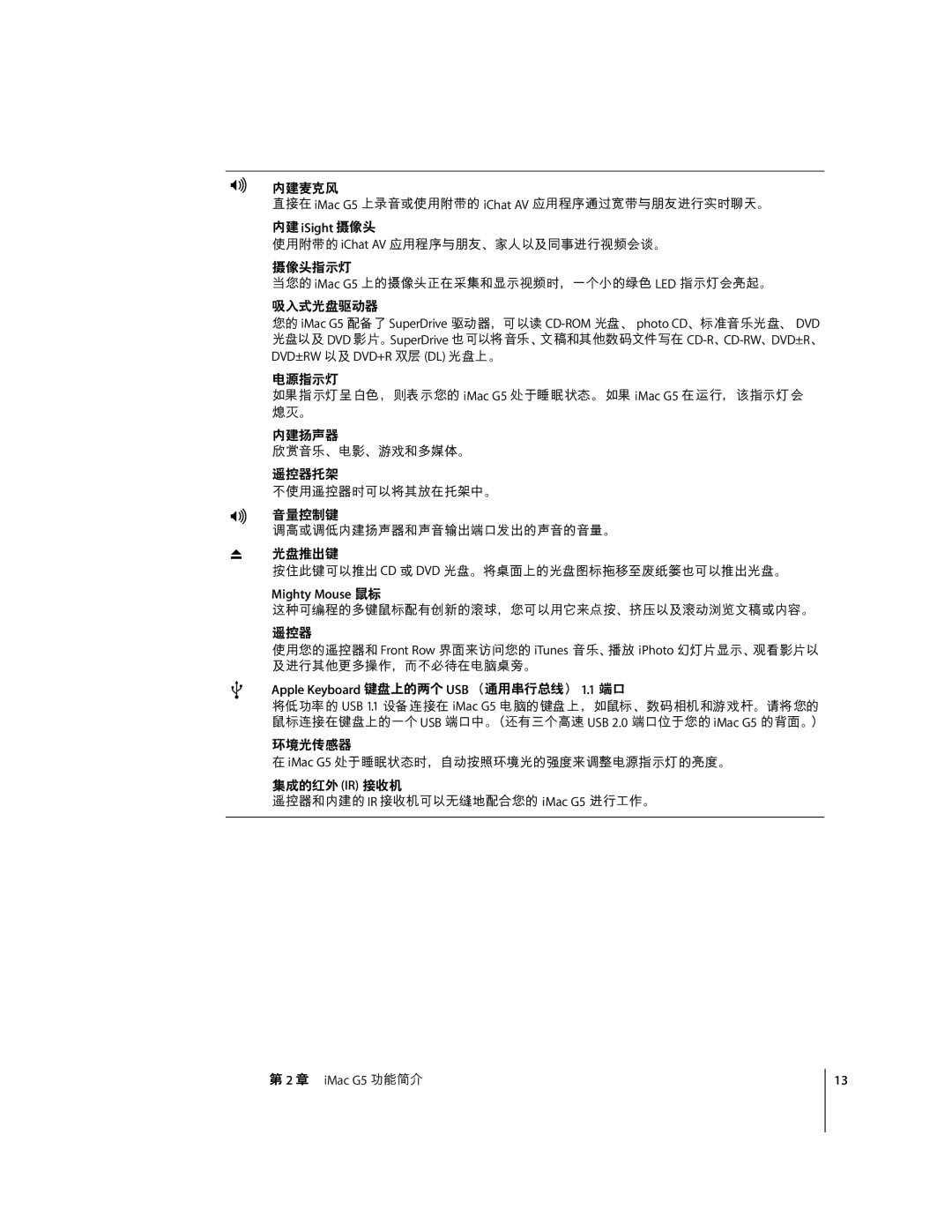G5 C specifications
The Apple G5 C, commonly known as the Power Mac G5, is a landmark personal computer that embodies Apple's commitment to high-performance computing, especially during the early 2000s. Launched in 2003, it marked a significant stride towards powerful workstation solutions for creative professionals and enthusiasts alike.One of the most notable features of the G5 C is its dual-core architecture, which allowed for increased processing power and improved multitasking capabilities. Leveraging the PowerPC G5 processor, the system could handle an impressive range of applications simultaneously, making it an ideal choice for graphics-intensive tasks such as video editing, 3D rendering, and audio production.
With a sleek aluminum enclosure, the G5 C was designed to not only be visually appealing but also functionally efficient. The innovative thermal management system utilized advanced cooling technology, which ensured optimal performance while minimizing noise. This was particularly important in creative environments where a quiet workspace is often crucial.
The G5 C supported a significant amount of RAM, allowing for up to 8 GB of DDR SDRAM, which further enhanced its performance and responsiveness. It also featured multiple PCI Express slots for expansion, providing users the flexibility to upgrade their systems with additional graphics cards, audio interfaces, or storage options.
In terms of storage, the Power Mac G5 C offered various configurations, with the ability to accommodate multiple hard drives. This allowed users to manage large files such as high-definition video content efficiently. FireWire 800 and USB 2.0 ports facilitated swift data transfer and connectivity with a variety of peripherals.
Apple's macOS operating system was optimized for the G5 C, providing a stable and user-friendly interface. The integration of software applications tailored for creative professionals, like Final Cut Pro and Logic Pro, further elevated the G5 C's status as a go-to tool for artists and musicians.
In summary, the Apple G5 C exemplified cutting-edge technology of its time, featuring dual-core processing, robust memory support, advanced cooling, and seamless macOS integration. Its aesthetic design combined with powerful capabilities made it an enduring favorite among those seeking top-notch performance in a personal computing environment. The legacy of the G5 C continues to influence Apple’s design philosophy and computing solutions.

